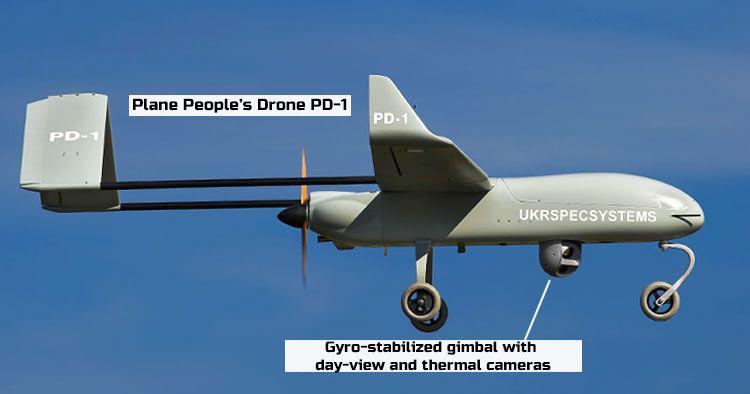Aerospace & Defense Ukrainian Kamikaze Drone Strike Sets Russian Oil Facility Ablaze David Hambling Contributor Opinions expressed by Forbes Contributors are their own. I’m a South London-based technology journalist, consultant and author New! Follow this author to improve your content experience. Got it! Jun 22, 2022, 06:54am EDT | Share to Facebook Share to Twitter Share to Linkedin Russian media are showing a video this morning of a kamikaze drone attack on a Russian oil refinery which leaves the site in flames.
The strike looks like the sort of Drone Doolittle Raid which Forbes previously anticipated and may be the signal of much more to come. The attack reportedly took place at Novoshakhtinsk, Rostov Oblast, some 150 km from the front line. Russian media are saying that two drones were involved, one of which was shot down.
The video shows a drone with a twin tail boom diving towards the facility followed by an explosion; a second video shows firefighters tackling a serious blaze at the site. The video appears to have been shot by oil workers who note the drone – the high-pitched engine noise is clearly audible on the soundtrack — and ask each other if it might be Ukrainian before it crashes into a building and explodes. While some have suggested that the drone might be a Bayraktar TB2, this seems unlikely.
The profile looks much close to the smaller PD-1 / PD-2 drone made by UKRSPECSYSTEMS of Kyiv. The PD-1 – “People’s Drone 1” was one of the successes of Ukraine’s crowdfunded effort to develop new drones for the armed forces at the start of the conflict with Russia in 2014 . With public support, a group of drone enthusiasts and engineers built a craft with a ten-foot wingspan and a flight endurance of more than five hours with a cruising speed of around 55 mph.
The latest versions are more advanced and can carry a maximum payload of 19 kilos / 42 pounds. However, if the drone was specifically configured for a one-way mission, it may have been able to carry a larger payload for a shorter duration. MORE FOR YOU American Airlines Pilots Say Operations Managers Must Go After Summer Breakdowns The U.
S. Air Force Is Gradually Rebuilding Its B-52 Bombers From The Rivets Out An American Bomber Visited Malaysia. A Bizarre Mix Of Local Jets Rose To Meet It.
The drone appears to be a variant of the Ukrainian PD-1 developed by UKRSPECSYSTEMS UKRSPECSYSTEMS Drones are normally flown by an operator using remote control. However, the PD-series are capable of autonomous flight, and are designed to fly themselves if contact is lost with the operator. Radio control is usually the limiting factor with how far away a drone can be controlled, which is why the most advanced drones such as U.
S. MQ-9 Reapers have satellite communications giving global range, while the Bayraktar TB2 is typically limited to less than 300 km . In this case, the drone may have been pre-programmed with the GPS co-ordinates of the target which can easily be located using services like Google Earth.
(The PD-series have inertial navigation which, unlike GPS, cannot be jammed). The PD-2 reportedly costs around $300k. Sacrificing one in such an attack is a good exchange for the amount of damage it appears to have done.
Add to that the priceless propaganda value is priceless; and it is also considerably cheaper than a cruise missile. The attack is highly reminiscent of similar kamikaze drone strikes carried out by Houthi forces against oil facilities in Saudi Arabia, one of which put the oil processing facility at Abqaiq out of action for some time in 2019 and caused a serious blip in the global price of oil. More recent Houthi attacks have set oil storage tanks in Jeddah on fire and hit a refinery outside Riyadh : like Ukraine, the Houthis make their own drones.
The current series, known as Samad-3 reportedly carried a bombload of 18 kilos / 40 pounds. This sort of strike is known as ‘bringing the detonator’: you do not need a large bombload, just a detonator to set of explosive or inflammable material already at the site. The Ukrainians learned this lesson the hard way in 2017 when Russian special forces dropping thermite grenades from quadcopters destroyed a series of ammunitions dumps.
The attack yet again raises questions about the effectiveness of Russian air defenses. The slow-flying drone has no stealth capability and no electronic defenses to confuse radar: it should have been easy to detect and track, and a simple target for Russian surface-to-air missiles. If they failed, anything coming over the border should have been intercepted by Russian fighters; while they do not operate much over Ukraine, they can fly freely over Russian soil and again, the drone should have been a sitting duck for air-to-air missiles or cannon fire.
Possibly the Russian really did shoot down one attacking drone but there is no evidence for this. (Some have suggested that Russian air defenses would destroy the U. S.
Gray Eagle attack drones being sent to Ukraine, the success of this attack suggests that yet again their capabilities are vastly overrated). The strike also raises questions about what happens next. Will Russia be forced to rearrange air defenses to provide better protection for vulnerable sites on home soil? Ukraine, which had previously struck oil platforms in the Black Sea – we do not know whether missiles or drones were involved – may now also strike other vulnerable facilities.
What we do not know is the range, number and payload of the drones at Ukraine’s disposal. But the success of this attack will surely mean there are more to come. Follow me on Twitter .
Check out my website or some of my other work here . David Hambling Editorial Standards Print Reprints & Permissions.
From: forbes
URL: https://www.forbes.com/sites/davidhambling/2022/06/22/ukrainian-kamikaze-drone-strike-sets-russian-oil-facility-ablaze/
